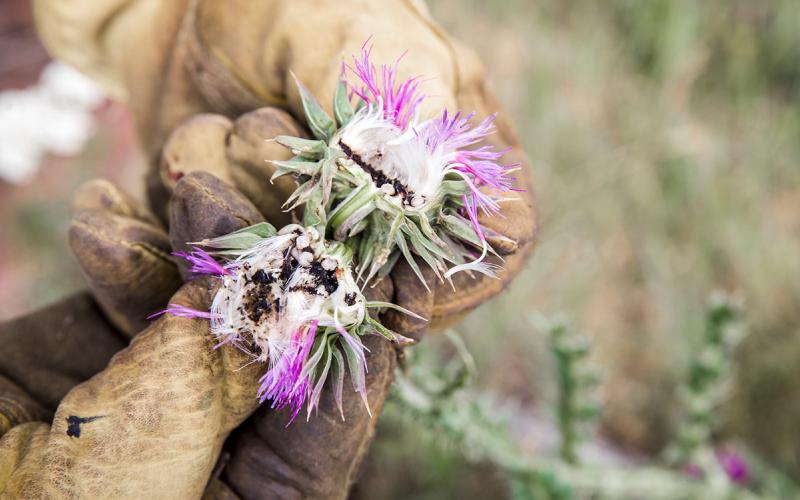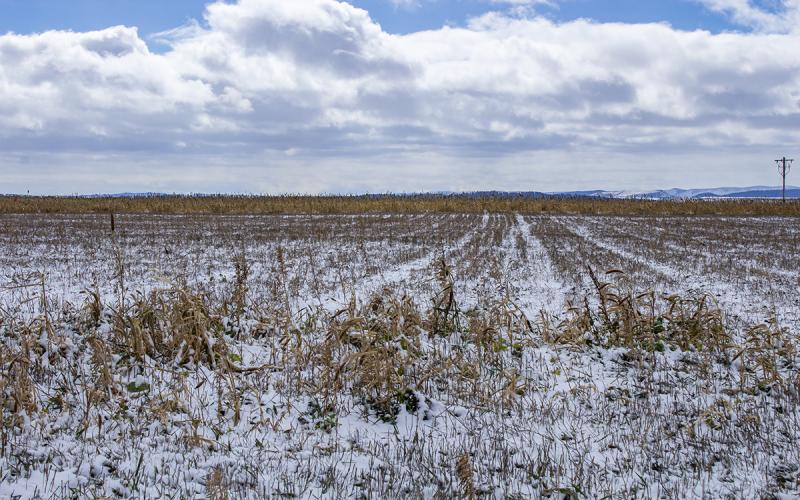Written collaboratively by Eric Jones, Philip Rozeboom, Jill Alms, and David Vos.
There has been a lone, isolated female waterhemp plant growing at the building where the SDSU Extension Weed Science Program operates during the growing season (Figure 1). The plant is finally mature and has produced seed (Figure 2). The remarkable note about this isolated female waterhemp producing seed is that the nearest waterhemp plants are about 100 yards away (Figure 3).
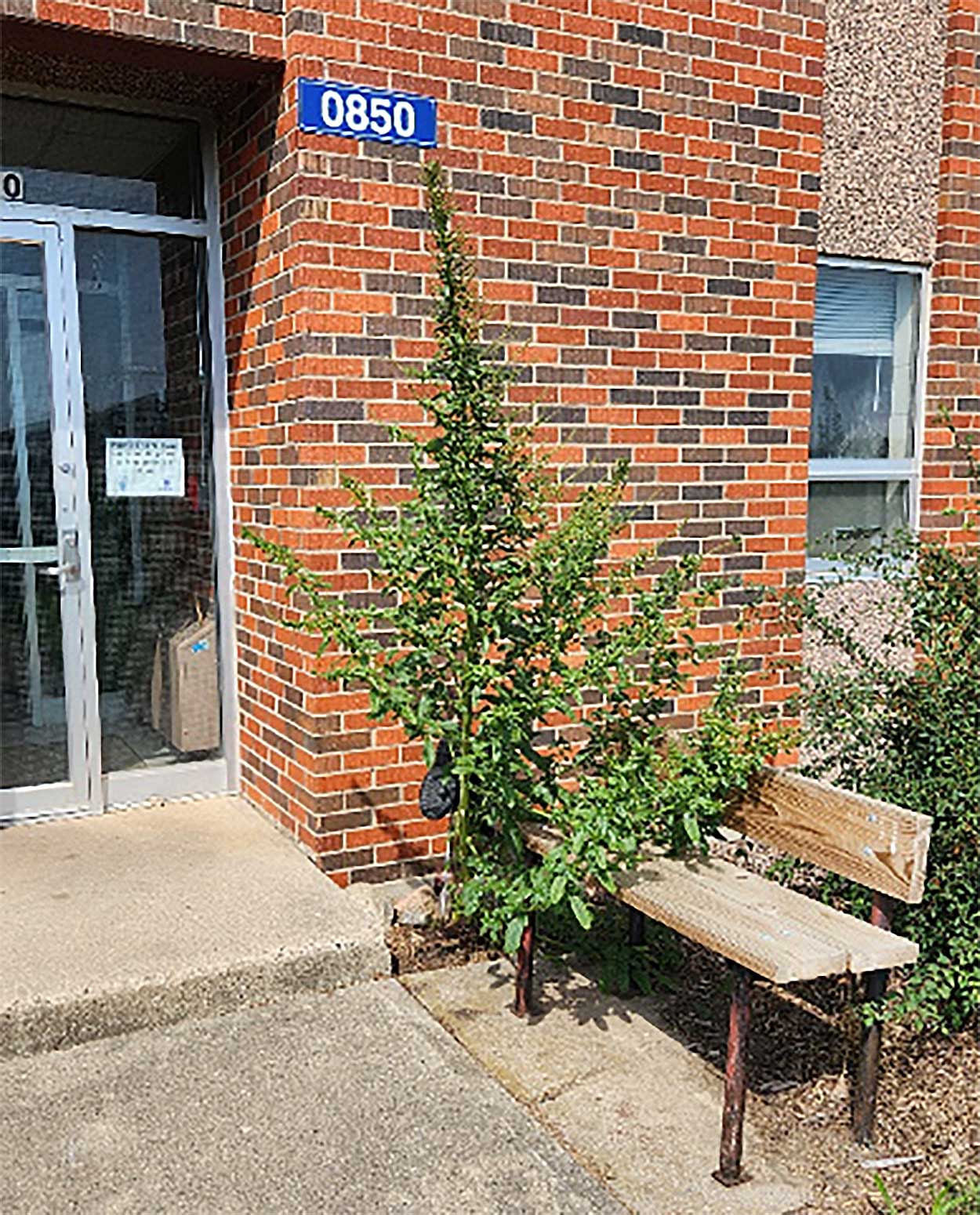
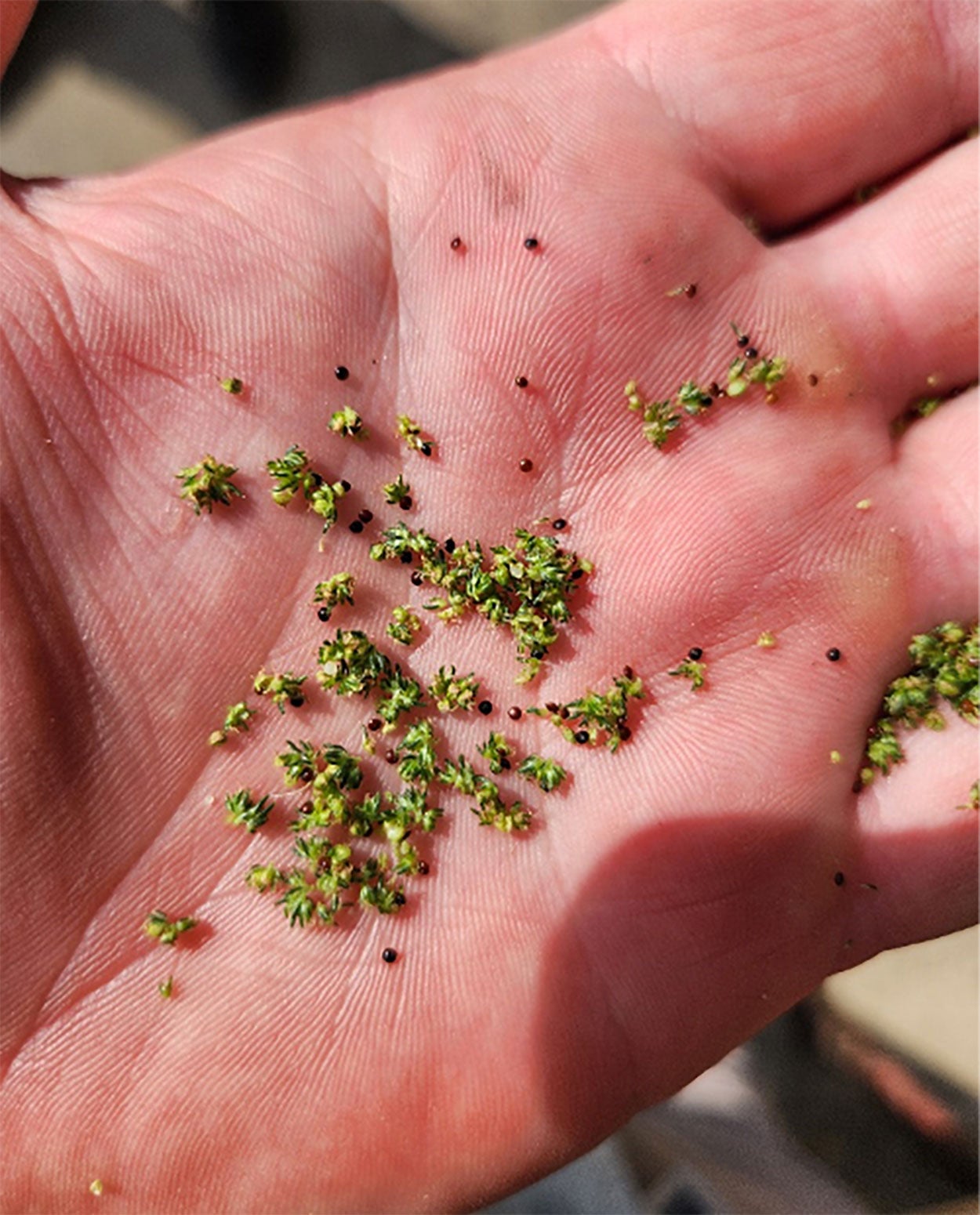
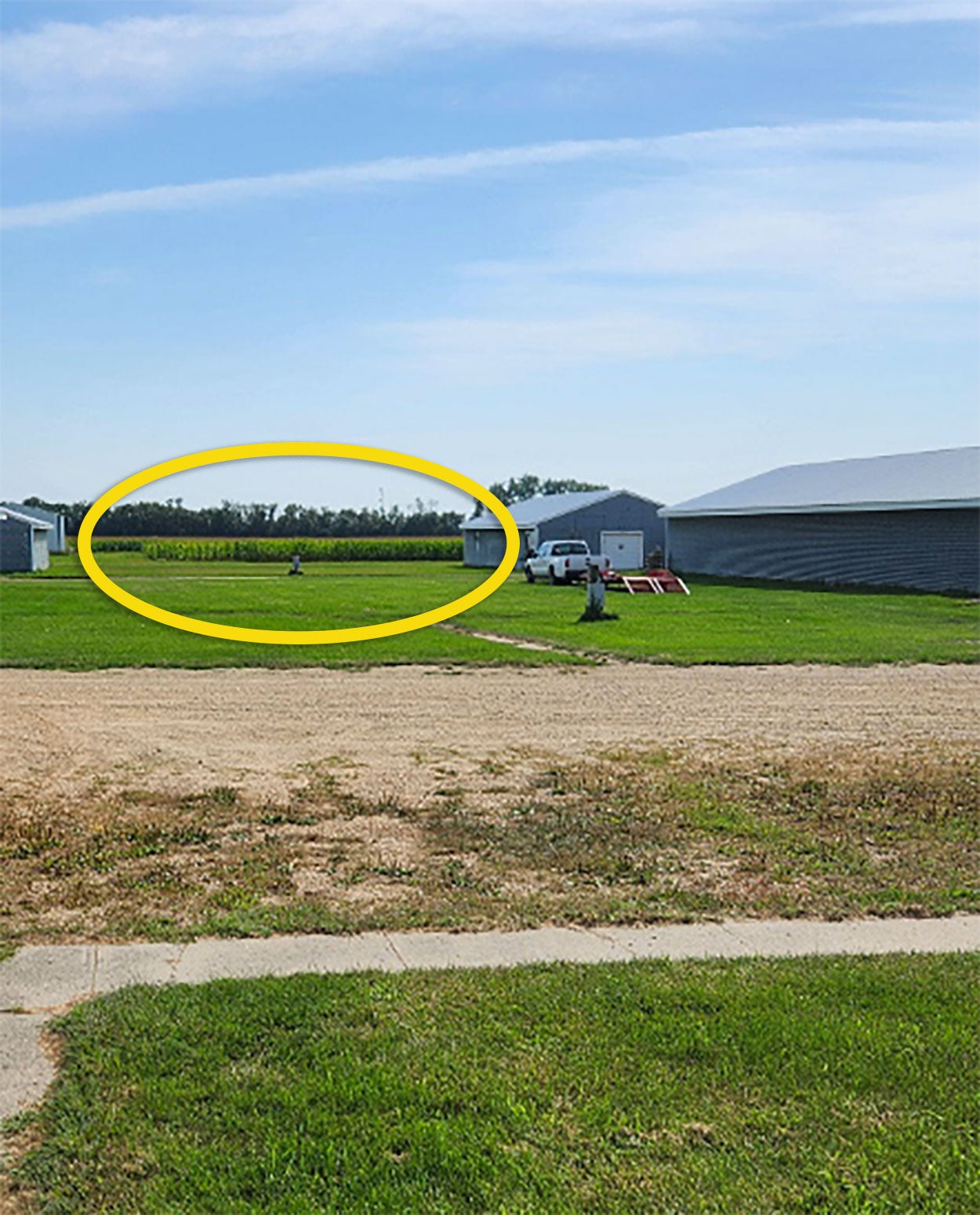
Previous research has shown that male plants can be 875 yards away and still have successful pollination of female plants (Liu et al. 2012). Previous research has also provided evidence that female waterhemp plants growing without competition can produce several hundred thousand seeds, where most will germinate and need to be managed in future growing seasons (Jones et al. 2019). Another noteworthy remark is that seeds become viable within 7 to 12 days of pollination (Bell and Tranel 2010).
While this result may not shock some, the fact that pollen can move relatively far distances to pollinate isolated female plants further highlights the need to effectively manage weeds in your field and adjacent areas. Herbicides will not control a plant this large, but simply cutting the single plant off at the soil surface and destroying the plant and seeds will significantly reduce the amount of waterhemp plants that germinate next year in this area. Use this as an example why it is always worth the effort to pull and remove a single or a few plants near your fields.
References
- Bell MS, Tranel PJ (2010) Time requirement from pollination to seed maturity in waterhemp (Amaranthus tuberculatus). Weed Sci 58:167–173
- Jones EAL, Owen MDK, Leon RG (2019) Influence of multiple herbicide resistance on growth in Amaranthus tuberculatus. Weed Res 59:235–244
- Liu J, Davis AS, Tranel PJ (2012) Pollen biology and dispersal dynamics in waterhemp (Amaranthus tuberculatus). Weed Sci 60:416–422
